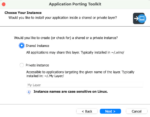With all the different conferences and components of Microsoft, it can be hard to keep track of all the different features and releases announced.
“Never in the company’s history has Microsoft integrated so aggressively,” wrote Bruno Terkaly, developer evangelist, on Microsoft’s blog. “Moreover, this innovation is happening from every angle—whether you’re talking about Office365 and productivity applications, whether you’re talking about client app development in the mobile space, or whether you’re talking about cloud computing and the big changes taking place with Microsoft Azure.”
(Related: Windows Phone developers get a voice)
Below is a roundup of the latest features added to Windows Phone 8.1 and Microsoft Azure as of today.
Windows Phone 8.1
One of the biggest features added to Windows Phone 8.1 was Microsoft’s intelligent personal assistant Cortana. Other features include a new Action Center, the debut of Internet Explorer 11, and universal apps.
“Universal apps provide the infrastructure to be able to share code, XAML, and resources across phone and tablet,” wrote Terkaly. Developers can now drag things from a phone or Windows 8 project directly into a shared project for immediate availability.
In addition to universal apps, APIs between Windows 8 and Windows Phone 8 have been unified, according to Terkaly. They support JavaScript, HTML, C#, VB, and C++.
Also recently announced was the Nokia Imaging software development kit, which provides a lot of capabilities for image manipulation that the developer doesn’t have to worry about.
Azure
A lot of Windows Phone 8.1’s power has come from Microsoft’s cloud, Azure, according to Terkaly.
Azure Web services provide secure and flexible options for development, deployment and scaling any Web app regardless of size. Azure mobile services help developers speed up their mobile app development with a turnkey way to authenticate users and send push notifications.
Recently added hybrid connections for both Azure services allow users to connect them to on-premises data, apps and services. There is no need to reconfigure VPNs or open firewall ports.
The release of the Azure API-management service provides the ability to unify and expose diverse back-end services, set policies for APIs, and track the usage, health, latency, and cache efficiency of APIs.
Other features include ExpressRoute, multiple site-to-site VPNs, internal load balancing, reserved IPs, anti-virus support, import/export service, Redis caching support, and a new file-sharing service.
More information about the latest features is available here.






